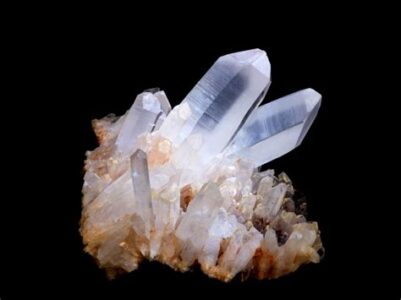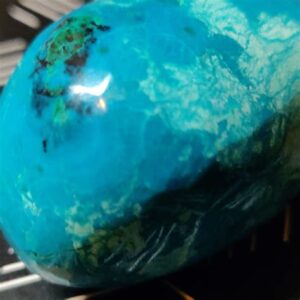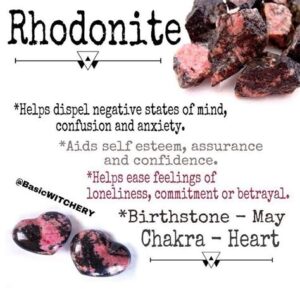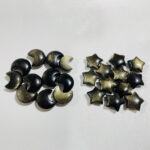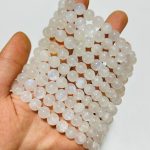Pyrite, an alluring mineral often mistaken for gold, has been captivating hearts for centuries. Its metallic sheen and iridescent hues have made it a popular choice for jewelry enthusiasts and fashionistas alike. This article delves into the fascinating world of pyrite jewelry, exploring its unique properties, exquisite designs, and multifaceted appeal.

A Mineral with a Mesmerizing Allure
Pyrite, also known as fool’s gold, is an iron sulfide mineral with a cubic crystal structure. Its golden luster and bright metallic appearance have earned it the nickname “fool’s gold,” as it can often be mistaken for actual gold, especially by inexperienced miners. However, upon closer inspection, pyrite exhibits a distinctive brassy hue and a lack of malleability, which differentiates it from its precious counterpart.
Harnessing the Beauty of Pyrite in Jewelry
Despite its common association with fool’s gold, pyrite has gained immense popularity in the jewelry industry. Its striking metallic sheen and lustrous surface make it a captivating adornment. When cut and polished, pyrite reveals a mesmerizing array of colors, ranging from a golden yellow to a deep bronze, with iridescent hues that evoke a sense of enchantment.
Jewelry designers have ingeniously incorporated pyrite into various pieces, from delicate earrings to bold necklaces. Pyrite’s versatile nature allows it to complement different styles, from bohemian to contemporary. It is often paired with semi-precious gemstones, such as turquoise, lapis lazuli, and moonstone, creating a harmonious blend of textures and colors.
Pyrite Jewelry: A Symbol of Strength and Protection
Beyond its aesthetic appeal, pyrite carries a rich symbolism in many cultures. Native American tribes revered pyrite as a sacred stone, believing it possessed protective powers. In ancient Egypt, pyrite was known as the “stone of protection” and was often used in amulets and talismans to ward off evil spirits.
Modern crystal healers attribute various metaphysical properties to pyrite. It is believed to enhance mental clarity, promote emotional balance, and shield against negative energies. Pyrite jewelry is often sought after by those seeking strength, resilience, and a connection to their inner power.
Understanding the Pros and Cons of Pyrite Jewelry
Like all gemstones, pyrite has its own unique advantages and limitations.
Pros:
- Affordable Luxury: Pyrite offers a cost-effective alternative to gold, providing a similar aesthetic at a fraction of the cost.
- Durability: Pyrite is a relatively hard mineral, making it resistant to scratches and wear. This durability ensures that pyrite jewelry can endure daily use and retain its beauty for extended periods.
- Versatile Appeal: Pyrite’s metallic sheen and warm hues complement a wide range of skin tones and styles, making it a versatile choice for jewelry enthusiasts.
Cons:
- Potential Oxidation: Pyrite can oxidize over time, especially when exposed to moisture or air. This can result in the formation of a brown or black patina on the surface of the stone.
- Not Malleable: Pyrite is not as malleable as gold, making it more challenging to set in intricate jewelry designs.
- Weight: Pyrite is a relatively heavy mineral, which may make larger pieces of jewelry uncomfortable to wear for extended periods.
Unveiling the Captivating Charm of Pyrite Jewelry
The allure of pyrite jewelry lies in its ability to simultaneously satisfy both aesthetic and symbolic desires. Its golden radiance adds a touch of opulence to any outfit, while its protective properties offer a sense of empowerment and well-being. Pyrite jewelry has become a favorite among fashion-forward individuals and crystal enthusiasts alike, who appreciate its unique beauty and multifaceted significance.
Pyrite Jewelry Designs: Exploring Creative Expressions
Jewelry designers have unleashed their creativity in crafting pyrite jewelry, resulting in an array of exquisite designs. From delicate pendants to statement-making necklaces, pyrite is showcased in a myriad of captivating forms.
- Intricate Carvings: Pyrite’s cubic structure allows for precise carvings, creating intricate patterns and designs that enhance the stone’s natural beauty.
- Geometric Shapes: Modern pyrite jewelry often features geometric shapes, such as cubes, pyramids, and spheres, highlighting the mineral’s angularity and metallic sheen.
- Mixed Media: Pyrite is frequently combined with other materials, such as leather, wood, and gemstones, creating eclectic and visually captivating jewelry pieces.
- Textured Surfaces: Designers experiment with different surface treatments to create textured pyrite jewelry, adding depth and interest to the pieces.
Pyrite Jewelry Care and Maintenance
To preserve the beauty of pyrite jewelry, proper care and maintenance are essential.
- Protect from Moisture: Avoid exposing pyrite jewelry to water or excessive moisture, as it can lead to oxidation and discoloration.
- Clean Regularly: Use a soft, damp cloth to gently wipe down pyrite jewelry after each wear to remove dirt or oils.
- Avoid Abrasive Cleaners: Harsh chemicals or abrasive cleaners can damage the surface of pyrite.
- Store Properly: Store pyrite jewelry in a cool, dry place away from direct sunlight to prevent oxidation.
Pyrite Jewelry in Various Cultures
Pyrite has a rich cultural history, holding significance in different societies around the world.
- Native American Cultures: Native Americans viewed pyrite as a sacred stone and used it in rituals and ceremonies. It was believed to possess healing powers and protect against negative energies.
- Ancient Egyptian Civilization: The ancient Egyptians associated pyrite with the god Ra and considered it a symbol of the sun. Pyrite was often incorporated into jewelry, talismans, and amulets.
- Chinese Tradition: In Chinese culture, pyrite is known as “wuhuang ruyi” and is believed to attract wealth and prosperity. It is often used in feng shui applications and as a decorative element in buildings.
FAQs on Pyrite Jewelry
-
Is pyrite jewelry durable? Yes, pyrite is a relatively hard mineral, making it resistant to scratches and wear. However, it is important to protect it from moisture and avoid abrasive cleaners.
-
Can pyrite jewelry tarnish? Yes, pyrite can oxidize over time, especially when exposed to moisture or air. This can result in the formation of a brown or black patina on the surface of the stone.
-
Is pyrite jewelry suitable for everyday wear? Pyrite jewelry can be worn daily if proper care is taken. Avoid exposing it to water or excessive moisture, and clean it regularly with a soft, damp cloth.
-
Is pyrite jewelry hypoallergenic? Pyrite is generally considered hypoallergenic, meaning it is unlikely to cause allergic reactions. However, as with any jewelry, it is advisable to test a small area of skin before wearing pyrite jewelry for extended periods.
-
What styles of jewelry are pyrite typically used in? Pyrite is commonly used in a variety of jewelry styles, including earrings, pendants, necklaces, bracelets, and rings. It can be incorporated into both everyday jewelry and statement pieces.
-
How do I clean pyrite jewelry? To clean pyrite jewelry, use a soft, damp cloth to gently wipe down the surface. Avoid using harsh chemicals or abrasive cleaners, as these can damage the stone.
-
Where can I buy pyrite jewelry? Pyrite jewelry can be purchased from a variety of sources, including online retailers, jewelry stores, and craft fairs.
-
What is the average cost of pyrite jewelry? The cost of pyrite jewelry can vary depending on the size, quality, and design of the piece. Prices can range from a few dollars for simple earrings to hundreds of dollars for elaborate necklaces.
Conclusion
Pyrite jewelry captivates with its radiant allure and symbolic significance. Its golden sheen, reminiscent of fool’s gold, adds a touch of opulence to any outfit, while its protective properties offer a sense of empowerment and well-being. Whether adorned by fashion-forward individuals or crystal enthusiasts, pyrite jewelry continues to enchant with its unique beauty and multifaceted appeal.





